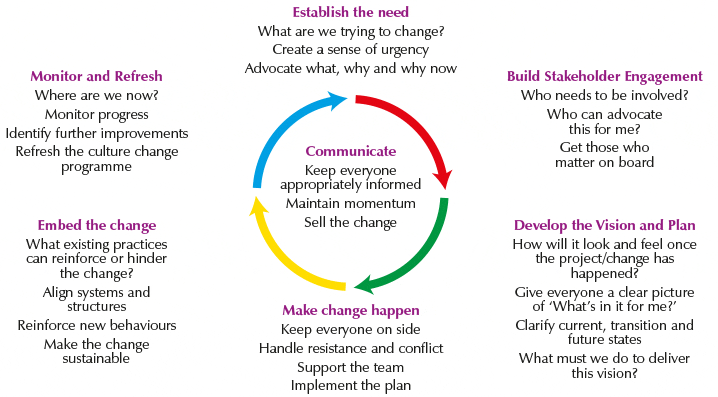It’s Hard to Ignore the Importance of the ‘Soft Stuff’
It’s never easy; our Change Management programme shows how to gain acceptance, overcome resistance and understand the importance of the ‘soft stuff’. Our training will help enable you to become effective at change management and achieve the full potential of your project.
No matter what type of change you are looking to make, nor how experienced you might be in the ‘topic’, if you don’t recognise the importance of the ‘soft stuff’, your chances of success will be reduced.
This process is about how well you work with the people affected by or involved in the programme or project. You need to get them on board with what you’re aiming to do. They may well be at very different levels within the organisation, but their level of acceptance of the initiative, approach, or proposed solution will ultimately determine its success. George Eckes’s formula expresses this well:
But, in all too many organisations, change isn’t managed well. Ineffective change management of people is a major contributing factor in causing projects to either fail completely, or not realise their full potential. There are some real risks when change management is ineffective. These include:
- Projects going over budget or taking too long to complete
- Projects failing to achieve their stated goals
- Resistance to the change emerges and increases
- Employees fail to commit, either by finding workarounds, or simply slipping back to the old way. In some cases, this will be the result of poor communication or training
- Organisations building a history of failed change initiatives, which in turn builds cynicism when new programmes or projects are announced
- Employee satisfaction and morale deteriorates with a series of knock-on effects that impact on the customer and ultimately on market share
Catalyst’s Elements of Change Model
When change management is done well, people feel engaged in the change process and work collectively towards a common objective, realising benefits and delivering results. The ‘A Factor’ in Eckes’ formula increases and is in line with the ‘Q’. The effect can be significant.
Supported by a collection of tools and techniques, we use the framework of our Elements of Change Model to help organisations manage change from a current to future state that achieves successful outcomes:
Applying this structured framework of methods, tools and processes, increases the probability of staying on schedule and budget, resulting in higher benefit realisation.
As a minimum, we recommend change leaders participate in our three-day Managing Change programme.




